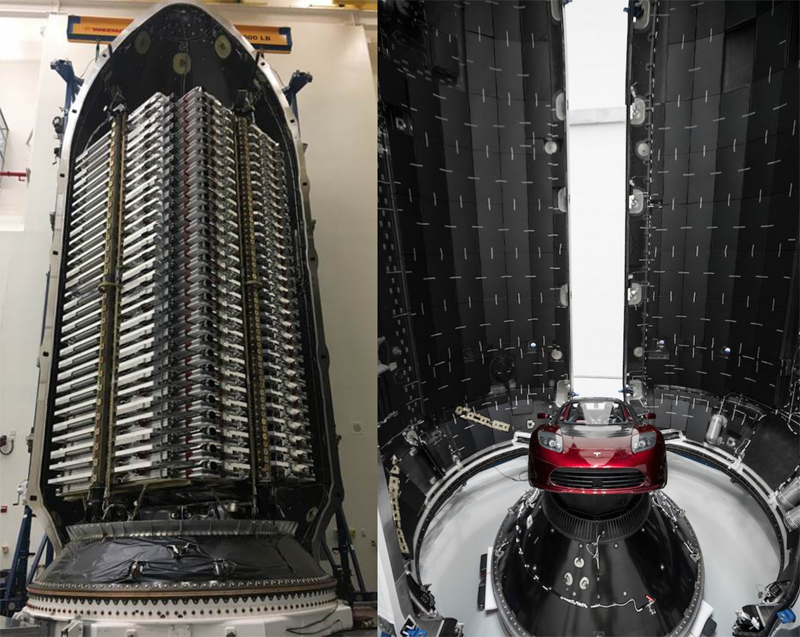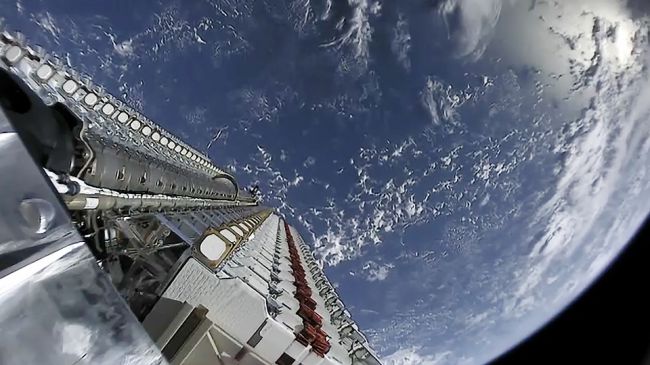The US Air Force has been beaming high speed (and encrypted) internet connections into its military aircraft thanks to the burgeoning Starlink satellite fleet from Elon Musk’s SpaceX.
SpaceX also announced this week that it hopes to begin offering its Starlink broadband service to US customers in mid-2020, providing it can place enough satellites into orbit in time. Another 60 satellite are expected to launch in November from an Air Force station in Florida.
But then things ramp up next year. Senior company executives in September revealed that it intends to launch 24 Starlink missions in 2020, as part of SpaceX’s strategy to place up to 12,000 satellites in orbit, with approximately 2,000 satellites launched per year. It could eventually place up to 42,000 satellites into orbit in the long term.

Starlink connections
It comes after SpaceX launched 60 “Starlink” satellites for its low earth orbit-based broadband project in May this year.
The Falcon 9 rocket carried 60 flat-packed satellites, after it lifted off from Cape Canaveral Air Force Station after the launch had been delayed by heavy winds.
The Falcon 9’s main-stage reusable booster rocket then returned to Earth and landed successfully on a barge floating in the Atlantic ocean.
The 24 Starlink missions in 2020 therefore could theoretically see the addition of 1,440 “Starlink” satellites next year, providing coverage for the southern area of the United States.
Just days after the May launch it was revealed that SpaceX had raised more than $1 billion (£790m) in a six month period to help fund its broadband satellite ambitions.
US Air Force
And the investment is paying off, after SpaceX President and Chief Operating Officer Gwynne Shotwell confirmed that the US Air Force is already testing its service.
“We are delivering high bandwidth into the cockpit of Air Force planes,” Shotwell was quoted by Reuters as saying on Tuesday. “Right now we’re just testing the capability and figuring out how to make it work.”
The US Air Force program is reportedly called ‘Global Lightning’, and it began testing with SpaceX in early 2018 as part of a $28 million Pentagon contract awarded to SpaceX in late 2018.
The Air Force used Starlink’s first two test satellites to beam to terminals fixed to a C-12 military transport plane in flight.
According to SpaceX Senior VP Tim Hughes, this test saw the C-12 plane receiving internet speeds of 610 megabits per-second. That type of speed can download a movie in under a minute.
Meanwhile Shotwell was quoted as saying that the US Air Force program is ongoing and expects to test Starlink with “a number” of additional military aircraft types.
The contract also includes testing communications between satellites in orbit, Reuters reported.
The US military makes heavy use of satellites, and the head of the new US Space Command, General John Raymond, Reuters said had previously visited SpaceX’s Starlink factory in Redmond, Washingtons. General Raymond has also apparently visited OneWeb’s new satellite production line in Cape Canaveral, Florida.
Rival networks
This is because Space X is not the only player in beginning rolling out satellite-based Internet connectivity.
The other companies racing to construct satellite-based broadband networks include Jeff Bezos’ Blue Origin, which intends to deploy a 3,200-satellite network known as Project Kuiper.
Other players include Kepler, LeoSat and Telesat Canada.
But perhaps the most immediate challenge to SpaceX’s Starlink comes from British start-up OneWeb, which launched its first satellites in February.
In March OneWeb said it had raised a total of $3.4 billion (£2.63bn) in private funding, paving the way for a series of monthly launches this autumn to build an initial network of 650 satellites operating at 1,200km.
What do you know about fibre broadband? Take our quiz!





